See the campus protests over the last 6 decades that dwarf the Gaza protests in size and disorder
- Oops!Something went wrong.Please try again later.
Demonstrations against Israel's war in Gaza have rocked college campuses across the US.
Over 2,500 arrests have been made as police and university administrators crack down on protesters.
The widespread activism bears similarities to past student movements — but also key differences.
Waves of protests against the seven-month Israel-Hamas war are roiling college campuses across the US, with students setting up encampments on central quads and taking over academic halls.
Law enforcement and university administrators attempted to quell the disorder, shutting down encampments and conducting mass arrests.
As of Monday, more than 2,500 people have been arrested or detained in connection to the protests, according to data collected by The New York Times.
The recent spread of student activism has led some to compare it to major student movements over the Vietnam War and South African apartheid.
While the recent demonstrations are still ongoing after several weeks, they are still far from the scale and disorder of movements in recent decades.
Protesting Israel's war in Gaza
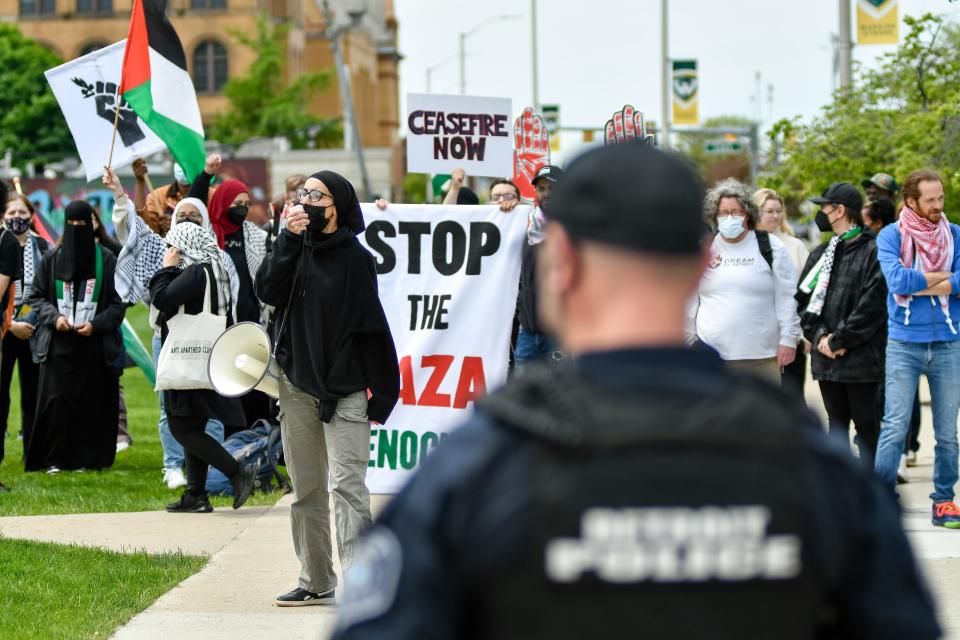
On April 17, Columbia University's president, Nemat Shafik, was called before Congress after Republican lawmakers accused her of failing to address concerns of antisemitism on the school's campus.
The same day, hundreds of Columbia students occupied the South Lawn to set up an encampment on campus, dubbed the "Gaza Solidarity Encampment," demanding that school administrators divest from businesses and investments in Israel and calling for a cease-fire in Gaza.
The following day, New York City police descended upon the encampment, arresting more than 100 protesters, including Rep. Ilhan Omar's daughter.
The arrests sparked similar demonstrations at dozens of colleges and universities nationwide, including the University of Texas Austin, the University of Southern California, and the University of Chicago.
More than 34,000 Palestinians have been killed and over 80,000 injured in the Gaza Strip, according to an assessment by the United Nations. The UN report called the level of casualties "unprecedented and still mounting" in the seven months since Hamas militants attacked southern Israel on October 7.
Experts say the devastation in Gaza left behind by the Israeli military is among the deadliest and most destructive in modern history, The Associated Press reported.
"We haven't seen anything like this since 1945, since the Second World War — that intensity in such a short time, and the massive scale of destruction," Abdallah Al Dardari, regional director for Arab states at the UN Development Programme, said at a press conference.
Student takeovers and canceled graduations
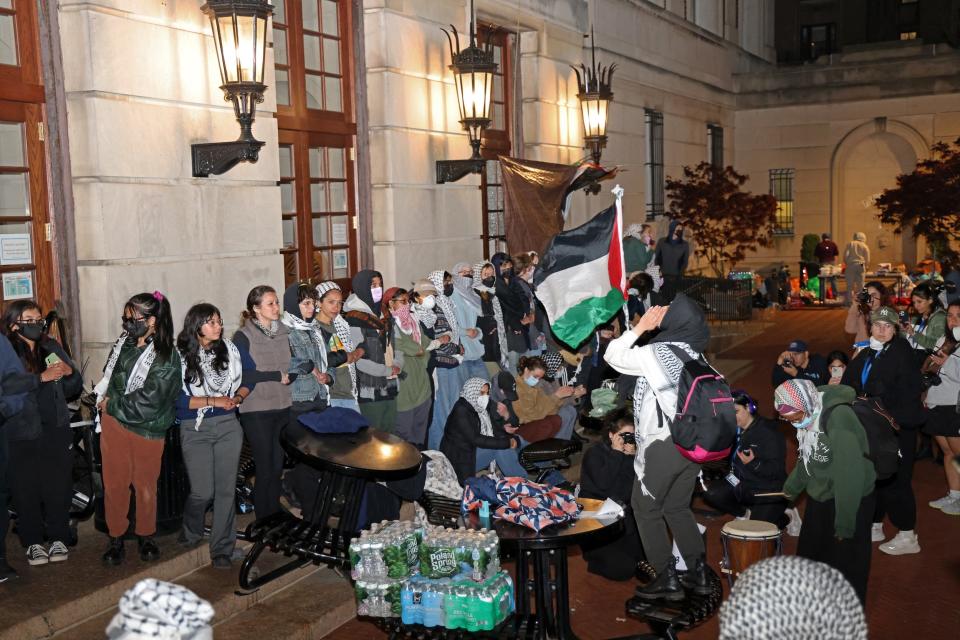
On April 30, dozens of protesters seized Columbia's Hamilton Hall, barricading the doors and hanging a banner reading "Free Palestine" from a window.
They refused to leave until Columbia met their demands to divest from companies that do business with Israel, provide financial transparency on its holdings, and promise amnesty for protesters.
NYPD officers carrying riot shields stormed the building, detaining dozens of protesters and clearing out the encampment.
The academic building has a decades-long history of student occupation during demonstrations over the Vietnam War and the Civil Rights movement.
Last week, protests at the University of California, Los Angeles, reached a breaking point after counterprotesters attacked a pro-Palestinian encampment with pepper spray and fireworks, prompting university administrators to call in law enforcement. After a tense, hourslong standoff, police in riot gear breached the encampment around 3 a.m. on May 2 and arrested more than 130 demonstrators.
As tensions continue to escalate between student protesters, law enforcement, and school administrators, US colleges and universities brace for a turbulent conclusion to the school year, moving in-person classes to hybrid or online and increasing security measures at graduation.
On Monday, Columbia canceled its university-wide commencement ceremony, opting for smaller, school-based ceremonies throughout the campus.
The move comes after the University of Southern California also canceled its main graduation ceremony following backlash for canceling the commencement speech of its valedictorian, Asna Tabassum, who is Muslim and pro-Palestinian.
Protesting US involvement in the Vietnam War
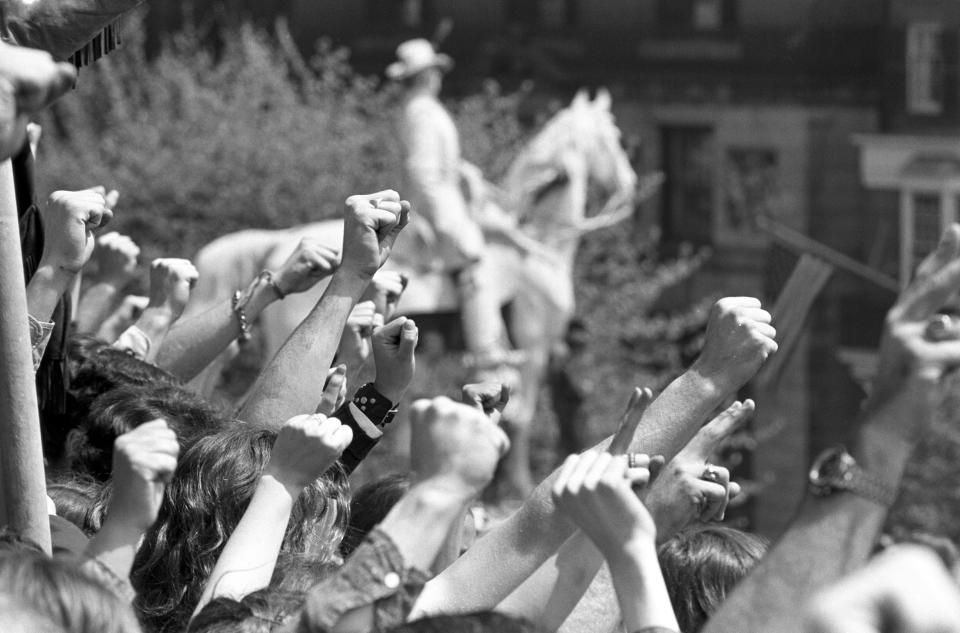
While the recent Gaza protests drew inspiration from past student movements, there are also key differences between them, especially in historical context, size, and level of disruption.
Five years after the US had entered the war in Vietnam, President Richard Nixon ordered US troops to invade northern Cambodia in 1970, expanding the US' already controversial role in the Vietnam War.
The announcement, which Nixon made two days after he authorized the Cambodia incursion, sparked waves of outcry throughout the US, which later turned into the largest and most organized anti-war movement in US history.
Anti-war sentiment on college campuses had already been brewing years before the invasion of Cambodia, but for many, it was the final straw. More than a million students from nearly 900 college campuses across the US participated in anti-war protests, boycotting classes, attacking ROTC facilities, and seizing academic buildings.
By 1968, Students for a Democratic Society, a radical student activist organization in the US, had grown to more than 100,000 members nationwide, according to the Bill of Rights Institute.
Student protesters at elite universities like Harvard, Yale, and Columbia condemned the expansion of the war, the draft, and the Nixon administration. In addition to campus protests, thousands of students held hunger strikes, teach-ins, and class walk-outs.
Peace movement turned deadly
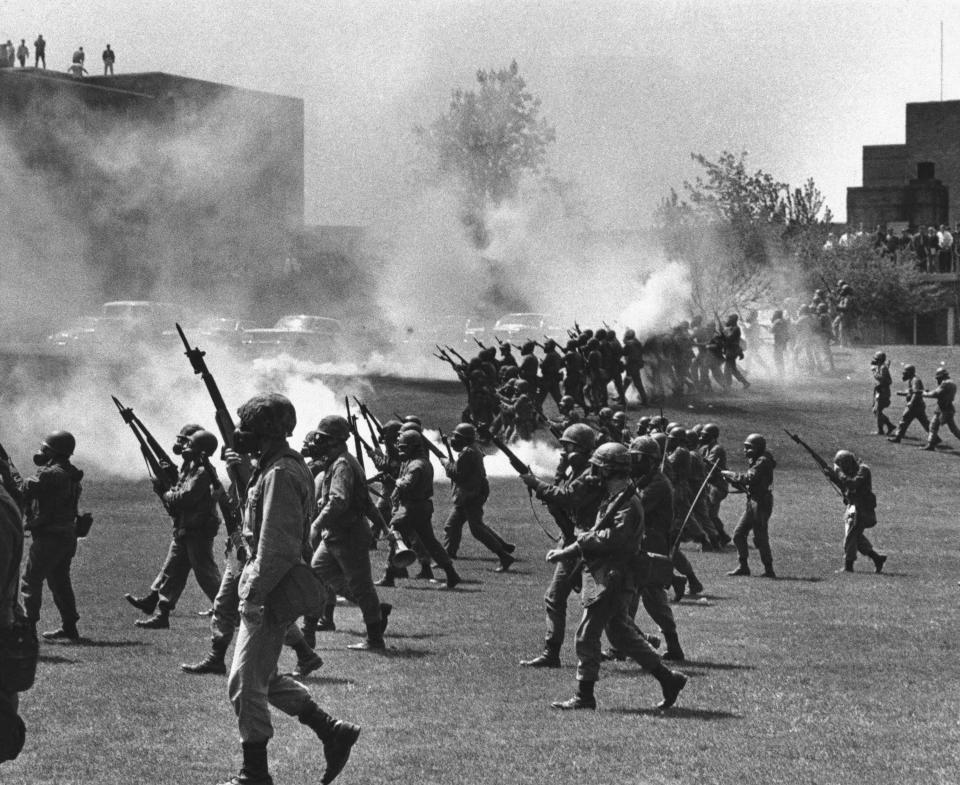
The student protests at Kent State University in Ohio became a flashpoint of anti-war student protests. The day after Nixon announced the Cambodian campaign, hundreds of students gathered to denounce the war and clashed with local law enforcement.
The Ohio National Guard was mobilized to the campus the next day to quell the disorder, but by the time they arrived, protesters had set fire to the school's ROTC building.
A major protest was scheduled for May 4, 1970, and about 100 Guardsmen armed with military rifles were stationed to crack down on the demonstration. The event was initially peaceful, but after Ohio National Guard General Robert Canterbury ordered them to disperse, protesters began throwing rocks and shouting at the soldiers.
The Guardsmen fired tear gas in a bid to disperse the crowd of protesters but were eventually cornered against the enclosed football field nearby. In the span of 13 seconds, witnesses said the Guardsmen fired nearly 70 shots into the crowd. Four students were killed, and nine were injured.
In a settlement with injured students and their families, the Ohio National Guard said some of the soldiers feared for their lives, and "hindsight suggests that another method would have resolved the confrontation."
Less than two weeks after the Kent State shootings, students gathered at Jackson State College, a historically Black university in Mississippi, to protest a number of issues including the Vietnam War and racial discrimination. The demonstration escalated as student protesters and passersby threw rocks and bricks at responding law enforcement, and a civilian set a dump truck on fire.
In 30 seconds, police discharged over 150 rounds at the crowd of protesters, killing two people — Jackson State junior Phillip L. Gibbs and high school senior James Earl Green. Twelve others were injured.
Rep. Ilhan Omar, whose daughter was arrested during the Gaza protests at Columbia, recalled the Kent State shootings on the 54th anniversary of the tragedy.
"We can't silence those expressing dissent, no matter how uncomfortable their protests may be to those in power," Omar wrote in a social media post.
'Biden's Vietnam'
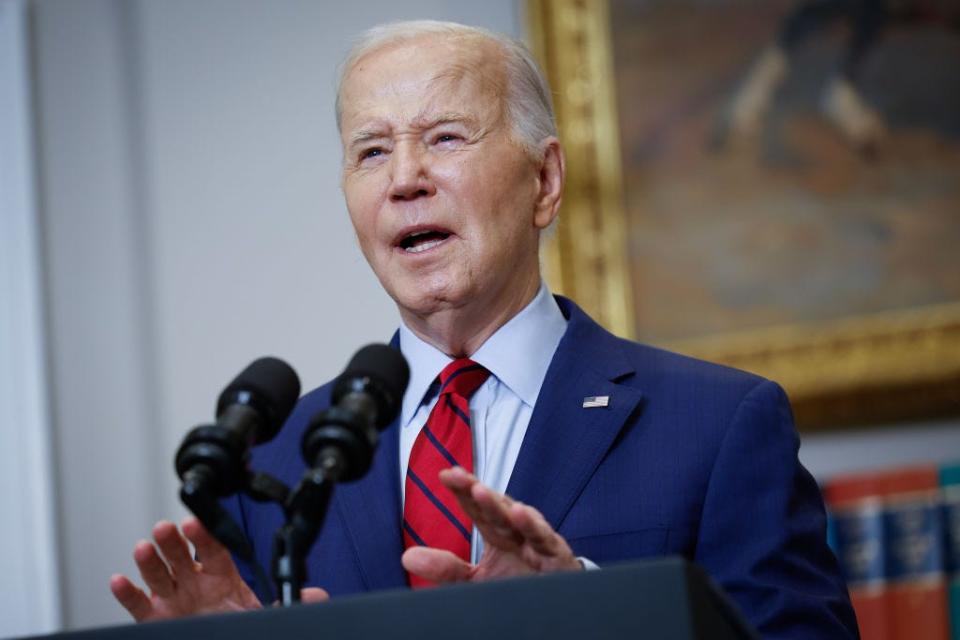
US President Joe Biden addressed the ongoing student protests last week, saying they "put to the test two fundamental American principles": the freedom of speech and the rule of law.
"Dissent is essential to democracy," Biden said in his Thursday remarks. "But dissent must never lead to disorder or to denying the rights of others so students can finish the semester and their college education."
"There's the right to protest but not the right to cause chaos," the president added.
The chaos and violence erupting at some university protests have prompted some progressive lawmakers to liken it to the deadly police crackdowns on anti-Vietnam War demonstrations.
Sen. Bernie Sanders said the president's contradictory Israel policy and response to the student protests "may be Biden's Vietnam."
Protesting South African apartheid
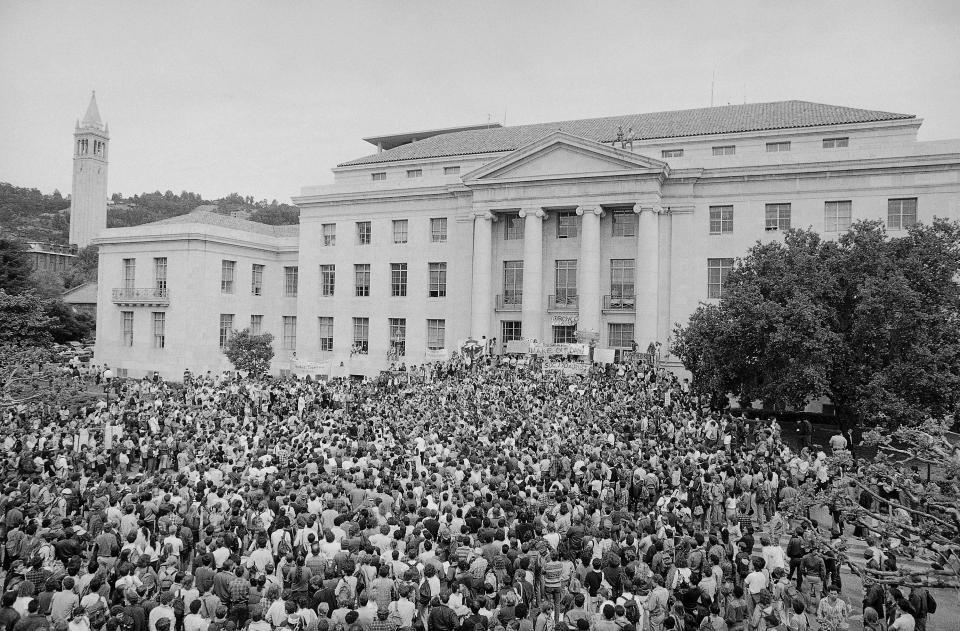
While the Vietnam War and now Israel's war in Gaza have left Americans divided on the US involvement in both, the anti-apartheid movement in the 1980s was less polarizing in comparison.
In the 1970s, progressives in Western democracies openly denounced South Africa's oppressive system of racial segregation under its apartheid regime. However, given South Africa's strategic and economic importance to Western powers, world leaders hesitated to completely sever ties with South Africa, sparking anti-apartheid demonstrations at a grassroots level.
In the US, student protesters pressured administrators to divest from businesses that supported the South African apartheid by boycotting classes and organizing marches and rallies. They occupied campus buildings, including Columbia's Hamilton Hall in 1985, where 150 students occupied and renamed it "Mandela Hall" after apartheid opposition leader Nelson Mandela.
Divestment from campus to Congress
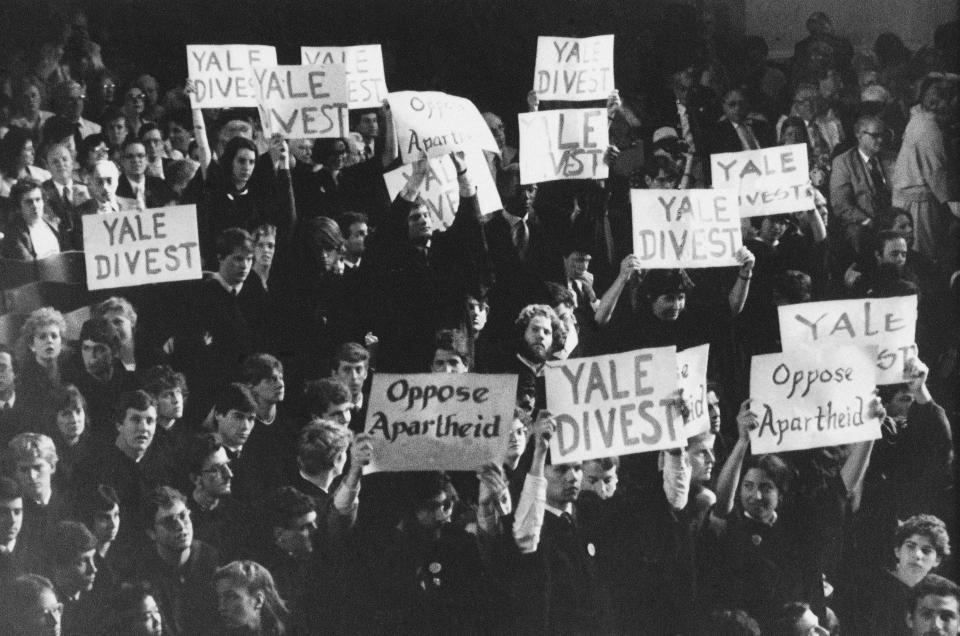
As a result of community-driven efforts on US college campuses, 155 universities eventually divested from companies with ties to South Africa. The US government followed suit in 1986 when Congress imposed sanctions on South Africa and enacted a divestment policy.
The calls to divest from South Africa-tied businesses echo the demands of Gaza protesters, who want their universities to stop doing business with companies supporting Israel.
But public opinion on the Israel-Hamas conflict is not as aligned as it was on apartheid four decades ago, according to Pedro Noguera, who led student anti-apartheid protests at the University of California, Berkeley, in the 1980s.
"It's really different because there was never a pro-apartheid group we had to contend with," Noguera, now a dean at the University of Southern California, told NPR in an interview. "There is a pro-Israel group, a pro-Zionist group. There are many Jewish faculty and students who see the protest as being antisemitic."
"I don't see it that way, and I know many Jewish friends and colleagues who don't see it that way," he continued. "The other thing that was different is this group — the ones that have been building these encampments — don't seem to be doing a lot of educating and organizing. And so they're pretty small, and that makes them more easily isolated."
Protesting against racial discrimination and segregation
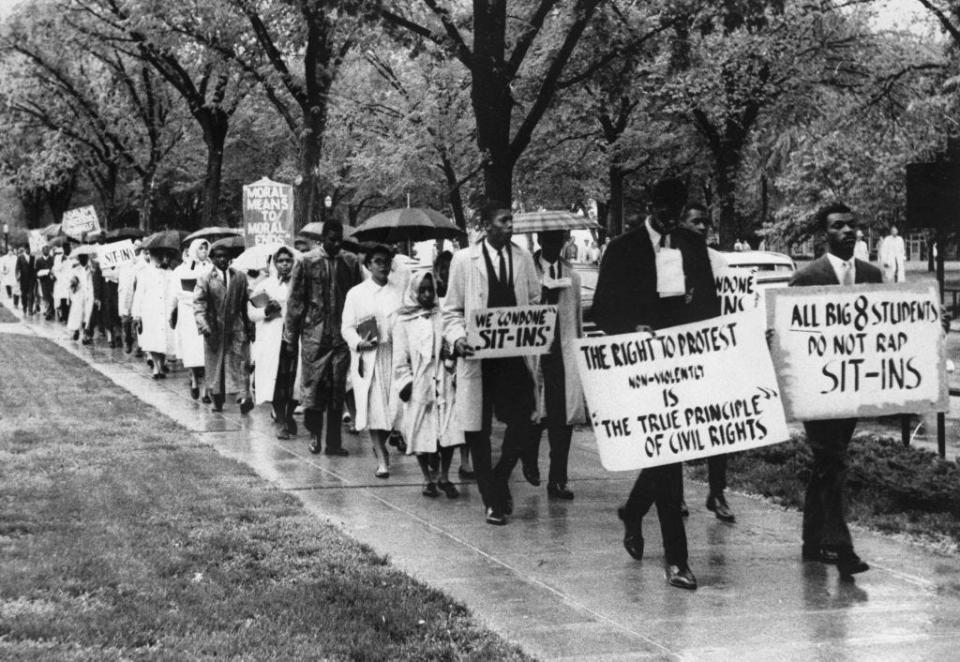
The 1960s saw massive demonstrations and activism nationwide against racial discrimination and segregation.
The civil-rights movement, which lasted from the late 1940s to the late 1960s, was characterized by historic nonviolent demonstrations that ultimately led to the enactment of federal laws guaranteeing equal rights for Black Americans.
On college campuses, students demanded racial equity in practices throughout the university, including fair admissions practices, more people of color among faculty, and a diverse curriculum.
Integrated groups of Black and white protesters took over segregated lunch counters and "whites only" cafeterias. Law enforcement was called to respond to the sit-ins but couldn't detain the protesters since they remained peaceful.
Seizing Hamilton Hall
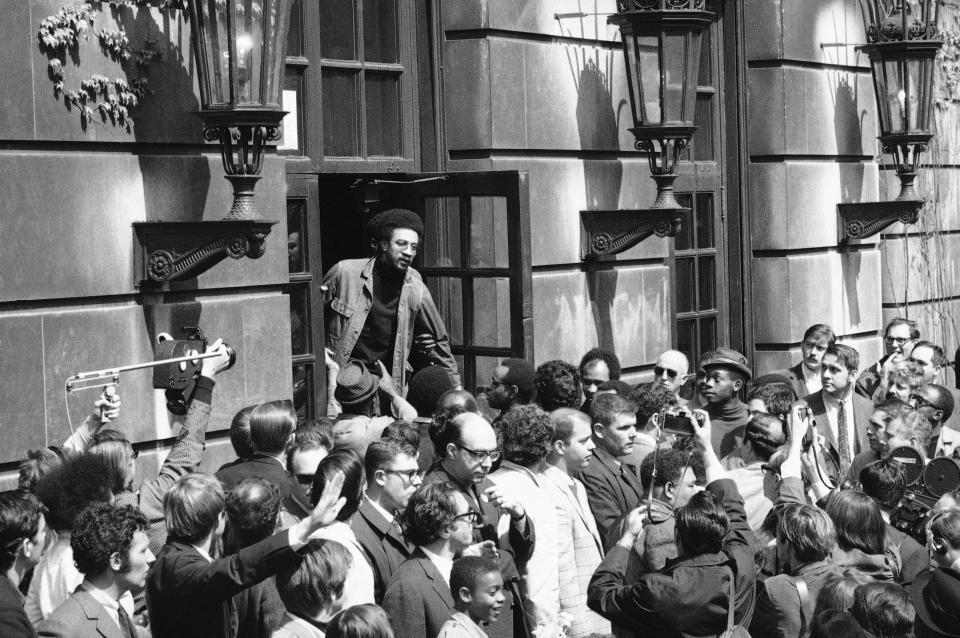
During a demonstration at Columbia University in April 1968, students occupied Hamilton Hall in protest of the Vietnam War and the university's plans to build a gym in a park that borders Harlem, mockingly referred to as "Gym Crow."
More than 80 Black protesters remained in the building and refused to negotiate with university administrators, transforming the building into living quarters and renaming it the "Malcolm X Liberation College."
A week later, nearly 1,000 police officers arrived on Columbia's campus to disperse the demonstrations. The 86 protesters occupying Hamilton Hall peacefully surrendered, but others violently clashed with officers trying to clear out buildings.
More than 700 arrests were made — one of the largest mass detentions in New York City history.
Read the original article on Business Insider

